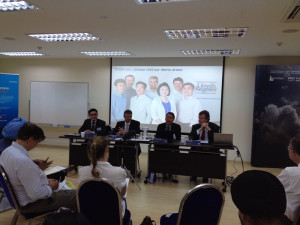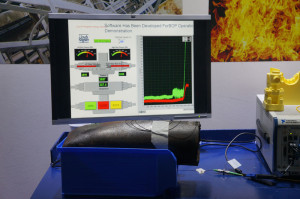Subsea drilling, well control among key themes at new Lloyd’s Register research center

By Astrid Wynne, contributing editor
Lloyd’s Register Energy Drilling (LRED) opened its Global Technology Center (GTC) research lab and Academy Training Center in Singapore on 17 October. The GTC is a project in partnership with the Singapore governmental group Agency for Science, Technology and Research (A*STAR), which uses high-performance computing as part of its research. The four research themes are subsea drilling and well control equipment; risk, including asset performance management and life extension; deepwater and floating offshore installations; and renewables.
“The energy market is our fastest growing business. Lloyd’s Register puts a lot of focus on the front end of the energy supply chain, the offshore market and, in particular, the drilling and well management market. It’s worth saying that this is now half of our total energy business and a quarter of our total business,” John Rowley, president of Lloyd’s Register Asia, said at the opening. The Singapore location is the second such center for Lloyd’s; the first is in Southampton, England and focuses on marine engineering and naval architecture.
Projects at the Singapore facility include advanced blowout prevention modeling using fracture theory, next-generation real-time risk monitoring on blowout preventers, and RFID tags that can withstand the HPHT conditions of deep drilling and deepwater drilling. The center also has research partners

working on advanced numerical modeling of offshore structures against extreme environmental loading. Studies at the GTC are carried out in part by graduate students from local Singapore universities, and there are plans to extend the range of academic cooperation throughout the region.
“There is going to be a net increase of almost 200 new rigs and a requirement for approximately 40,000 rig crew in the next five years,” Arie Koortens, VP-Asia Pacific, Middle East and Australia & SVP of business development for LRED, said. “Twenty percent of the experienced workforce will retire by the end of 2018, and new, high-technology units are being deployed worldwide. Training is required to ensure a competent and motivated workforce.”
Further, the bulk of rig construction is taking place at shipyards in Singapore, South Korea and China, and almost 50% of the global jackup fleet is deployed in Asia and the Middle East. Add to that growing local-content requirements in Vietnam, Indonesia, Malaysia and the up and coming Myanmar. All are spurring requirements for local training.
“The training center is an opportunity to develop the local people, and we welcome the opportunity to share our knowledge,” Mr Koortens added.
The Academy Training Center, in the same building as the GTC, currently offers 21 courses covering well control equipment and mechanical and electrical training that are accredited under IADC’s Drilling Industry Training program. The focus is on crew training for land rigs, tender rigs and jackups. The rig inspection, well control equipment, subsea engineers and hands-on BOP workshops all began in July. “Training courses for floater crews, such as the subsea engineers training program, deepwater challenges and the well control equipment course are provided here, but there is more focus on jackups, tenders and land rigs as there are not many floaters working in this region,” Mr Koortens explained.






